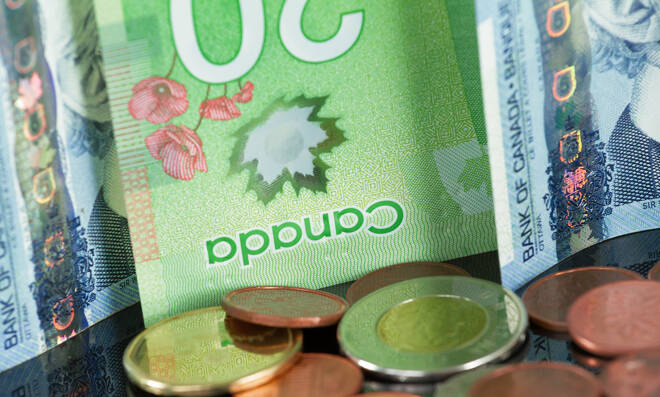Advertisement
Advertisement
USD/CAD: Loonie Strengthens For Second Straight Day on Higher Inflation, Could Turn Volatile
By:
The Canadian dollar strengthened for a second day against its U.S. counterpart on Wednesday after Canada's annual inflation rate hit highest since 2003 but strong greenback and crude oil’s ongoing roller coaster ride could increase the volatility.
In this article:
The Canadian dollar strengthened for a second day against its U.S. counterpart on Wednesday after Canada’s annual inflation rate hit highest since 2003 but strong greenback and crude oil’s ongoing roller coaster ride could increase the volatility.
Inflation in Canada reached a new 18-year high in September, driven by transportation, housing and food costs, according to data from Statistics Canada. That will exert pressure on the Bank of Canada ahead of next week’s interest rate decision.
Inflation rose to 4.4% in September – its highest level since February 2003. That was also higher than the market consensus of 4.3%.
Today, The USD/CAD fell to 1.2332, not far from the three-month high of 1.2334 hit last week – from Tuesday’s close of 1.2362. The Canadian dollar gained about 2.6% so far this month after depreciating around 0.5% in September.
“Given how quickly interest rate expectations have moved—markets are effectively looking for liftoff in rates in April of next year, according to OIS data—it might seem as if there is little upside for rate expectations or the CAD in today’s data. Above target inflation will, however, sustain expectations that the BoC’s tapering may be followed by earlier, or more aggressive, rate increases down the road. We remain bullish on the CAD outlook. CAD dips remain a buy,” noted Shaun Osborne, Chief FX Strategist at Scotiabank.
Canada is the world’s fourth-largest exporter of oil, which edged lower China considers intervention to ease coal crunch. At the time of writing, U.S. West Texas Intermediate (WTI) crude was trading 1.18% lower at $81.98 a barrel. Lower oil prices lead to lower U.S. dollar earnings for Canadian exporters, resulting in a decreased value of the loonie.
The dollar index, which measures the value of the dollar against six foreign currencies, was trading 0.03% lower at 93.701. However, the U.S. dollar has gained across most currencies in the last few weeks as investors have become concerned the Fed may withdraw its economic support due to slow global growth and high inflation.
Investors were concerned that increasing inflationary pressures could pose a headwind to the economy and affect how soon the Federal Reserve may be able to raise rates. Rising bond yields have contributed to the strengthening of the currency.
It is highly likely that the world’s dominant reserve currency, the USD, will rise by end of the year, largely due to the expectation of at least one rate hike next year. With the dollar strengthening and a possibility that the Federal Reserve will raise interest rates earlier than expected, the USD/CAD pair may experience a rise.
About the Author
Vivek Kumarauthor
Vivek has over five years of experience in working for the financial market as a strategist and economist.
Did you find this article useful?
Latest news and analysis
Advertisement
